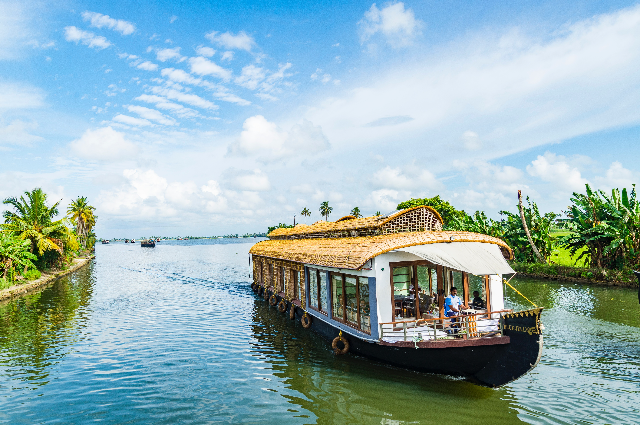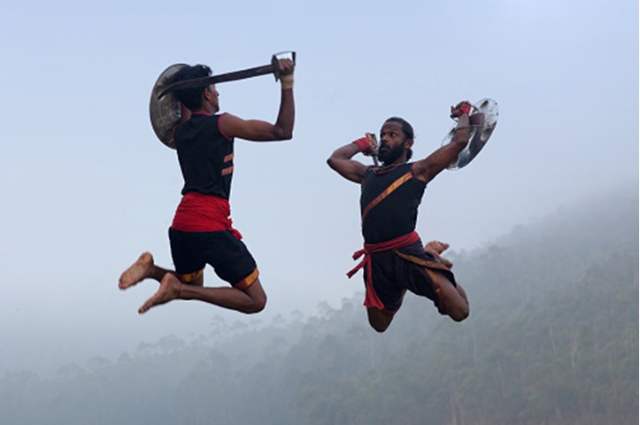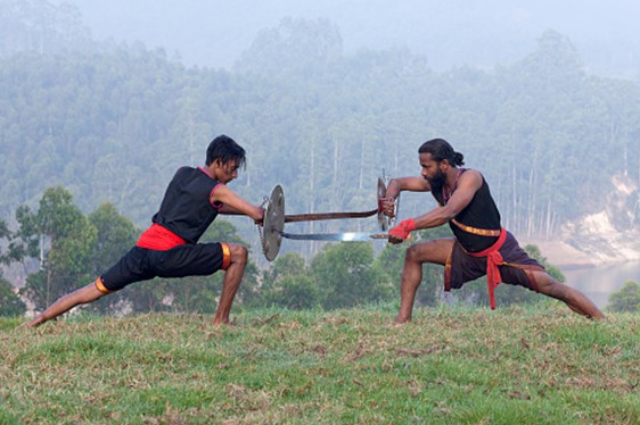
Kerala, known as ‘God’s own country, is also home to a very ancient and vibrant martial art form, called ‘Kalaripayattu’. Kalari, in simple terms, refers to a battlefield in Malayalam.
Kalaripayattu is arguably the oldest existing martial art form, dating back more than 3000 years and said to be the forerunner of various popularly known Chinese martial arts, as the Buddhist monk Bodhidharma took this knowledge from India to China. Lord Parasuram, who is considered as one of the ‘avatars’ of Lord Vishnu, and the creator of Kerala, is considered the founding father of Kalaripayattu.

The practice of Kalaripayattu is said to originate from the Dhanur Vedic texts encompassing all fighting arts and described by the Vishnu Purana as one of the eighteen traditional branches of knowledge. ‘Kalaris’ are the schools where training in this martial art form is imparted by Gurukals or masters.
This art is passed on to younger generations as per the traditional Guru-Shishya tradition. The Gurus select their shishyas carefully and strictly groom them to only use for defensive purposes and never for aggression or bullying.

This martial art form is indigenous to the Southern Indian state of Kerala which, legend has it, was created by the warrior saint Parasurama, an incarnation of Lord Vishnu, by throwing his axe into the sea which receded till the point where it fell. Parasurama then established forty-two kalaris and taught twenty-one masters these kalaris to protect the land he created.
Kalaripayattu is a traditional psycho-physiological discipline emanating from Kerala's unique heritage as well as a scientific system of physical culture training. The historical antecedents of this martial art form combine indigenous Dravidian systems of martial practice such as 'varma ati' or 'marma adi' with an influence of Aryan brahman culture which migrated southwards down the west coast of India into Kerala. There are two distinct traditions in Kalaripayattu-the Northern and the Southern schools.
A remarkable feature of this art form is that women too could learn and practice this. This martial arts form has all the elements of fighting like kicking, punching, stick fighting, and so on. In addition, it also has Marmasastra. Marma in the context of a human body refers to various important points (like pressure points). These Marma points can be used by the Kalari super experts for the healing of diseases. So also, these handpicked experts can also cause instantaneous death or serious injury by manipulation of these marma points, if the unavoidable necessity arises.
In the kalari tradition, the emphasis is laid on progressing from body exercises to combat with weapons and last of all to unarmed combat, unlike modern martial arts practices.

The patron saint of Kalaripayattu is Agastya whose strength and powers of meditation are legendary. It is said that when Lord Shiva married the Goddess Parvati at Kailasa in the North, all gods and goddesses went to attend the wedding, and with this shift in weight, the world tilted, so much so, that Agastya was sent to the South to restore the balance.
Lord Rama, as legend has it, was mentored by Agastya to acquire the weapons, which defeated the demon king Ravana. In the southern tradition, the emphasis is primarily on footwork, movement, and the ability to strike at vital points or 'marmas' in the opponent's body of which 108 points are considered lethally vulnerable.
